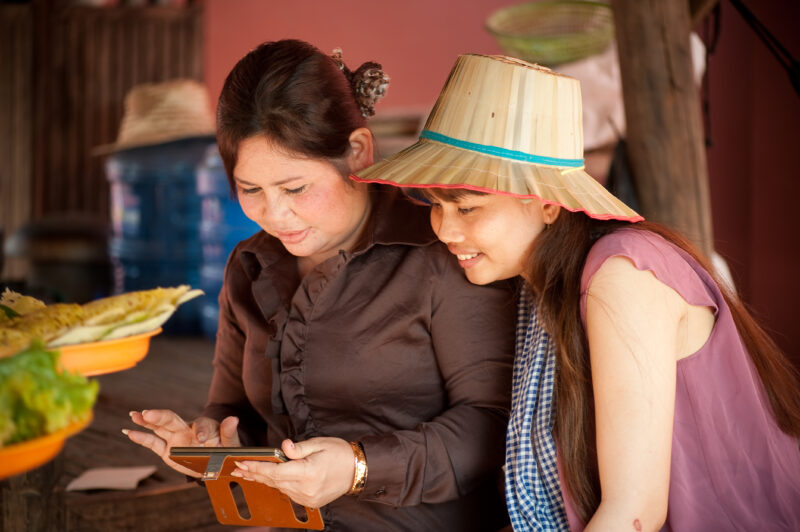Did you know that, around the globe, women are lighter news consumers than men? Men are more likely to say that they are ‘extremely’ or ‘very’ interested in the news. One of the reasons for this difference in news consumption is the global tendency of “news being produced mainly by men and focusing mainly on men,” according to a report by Luba Kassova, “The Missing Perspectives of Women in News.”
In fact, a study by Nordic media research hub Nordicom found “moderately strong associations” between the gender gap in news content and the gap in women’s and men’s news media use, suggesting that closing the gender gap in coverage could also help more women to engage with news. Further research suggests that the perception of being under-represented in content leads to women being less willing to pay for news.
How can media outlets benefit from producing content that reflects the information needs and perspectives of women? Internews’ partners’ ongoing efforts show promising avenues to boosting an outlet’s audience and advertisement revenue while increasing representation of women’s voices and perspectives.
In 2021, Internews’ partner media outlets in Armenia, Georgia, Moldova, and Ukraine intentionally engaged in approaches to target women’s specific information needs. They’ve reported on topics such as women’s empowerment, business, and career choices, gender-based violence and workplace discrimination, etc., based on what was found relevant for each context.
They found that inclusive content is not just good journalism, it’s an excellent way to diversify audiences and make news outlets more financially sustainable. In each country, participating media outlets increased both their audiences and their revenue.
These activities, supported through Internews’ “Audience Understanding and Digital Support” (AUDS) project funded by Sweden, contributed to an increase in the overall reach of each partner organization. In 2021, AUDS supported six activities specifically targeting the information needs of women in these countries. Check out some highlights of this important work below:
- Ukrainian media outlet Rubryka’s Despite Everything #TheNon-IndifferentCan project produced a series of stories about women who overcame difficulties in various facets of their lives to build thriving careers and contribute to socially significant initiatives. The stories, accompanied by a promotional social media campaign and the launch of the outlet’s sticker-packs on Telegram, earned Rubryka a record number of daily website visits – more than 96,000 – and contributed to a 173% growth in its average daily audience. The campaign also helped attract 63 new advertisers, which, in turn, contributed to a 280% growth of Rubryka’s revenues from online sales. To improve the integration of sponsored stories, the outlet has partially redesigned the website.
- In Armenia, Gala’s series of 15 videos about women starting businesses to overcome the economic crisis in the region helped defuse the stereotype that women are less successful than men in business. The stories were viewed more than 100,000 times. Gala’s team concluded that people craved uplifting information and human-centered stories during uncertain, post-war times. The story’s protagonists reported the coverage had positively affected their businesses.
- Also in Armenia, Aravot produced stories about women and girls with a new standard section of their webpage, titled Femin. The outlet started a Femin group on Facebook to directly interact with readers and leveraged platform algorithms prioritizing content shared in Facebook groups. The group, which bears Aravot’s brand, attracted advertisers’ interest and resulted in the first Facebook Group advertisement sold by the outlet. Aravot’s Facebook reach increased almost twofold, from 430,000 views in July 2020 to 750,100 in February 2021. Its Instagram reach grew from 1,530 to 2,240 views in the same period.
- BAStv in Moldova launched a section, Women Changing the World, on its website, and shared stories highlighting the challenges and successes of women and girls in the community. In the six months of the project, BAStv has more than doubled its online audience due, in part, to attracting women audiences.
Of course, “women audiences” are not a monolith or a fixed category, and media outlets should seek to understand the specific information needs of women in the areas they serve and how women’s perspectives can be meaningfully incorporated into existing content.
The cases above also show the importance of considering a wide variety of data, analytics, social media, and marketing approaches to develop this audience segment. As Kassova’s report suggests: “If women are to be empowered through their news consumption, it is important to understand their news needs, news consumption, and their interaction with the new digital technologies and social media.”
